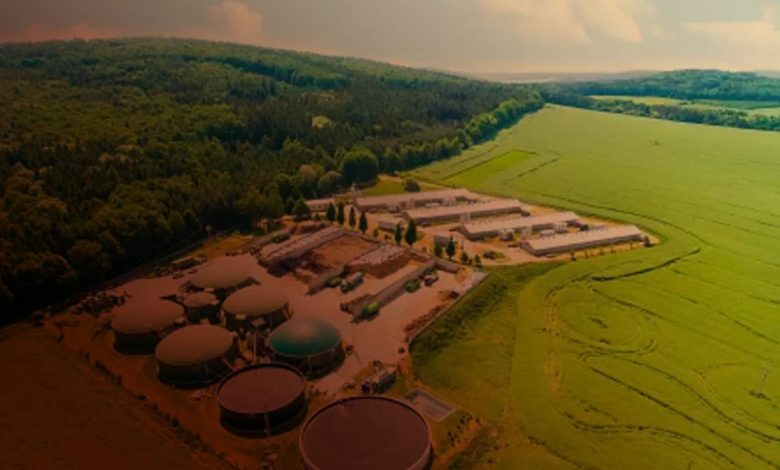Daily Current Affairs for UPSC
Compressed Biogas (CBG)

Topic- Environment and Ecology [GS Paper-3]
Context- Recently the Union Minister of Petroleum & Natural Gas and Housing & Urban Affairs has inaugurated Asia’s largest Compressed Bio Gas plant in Lehragaga, Sangrur in the state of Punjab.
Key Highlights
- The Ministry of Petroleum and Natural Gas has stated that Compressed BioGas (CBG) is the need of the hour and the government is taking all necessary steps to promote the CBG ecosystem.
- The CBG plant in Sangrur marked the beginning of India’s vision for a CBG-based rural economy.
- The Plant has been commissioned with an FDI investment of Rs. 220 crores by Verbio AG, one of Germany’s leading Bio-energy companies.
Significances of the CBG Plants
- Employment Opportunities– Sangrur CBG Plant is expected to provide direct employment to 390 and indirect employment to 585 people, also providing additional income to farmers.
- Environment Protection-
- As the plant will help reduce stubble burning of 40,000 – 45,000 acres of fields, it will translate into an annual reduction of 150,000 tons of CO2 emissions and clean air with reduced air pollution.
- It will also contribute to the achievement of India’s COP26 Climate Change targets of total projected carbon emissions by one billion tonnes from now to 2030 achieving the target of net zero emissions by 2070.
- SATAT Scheme–
- The plant will fulfill the objectives of the Sustainable Alternative Towards Affordable Transportation (SATAT) scheme 2018 to establish an ecosystem for production of CBG from various waste/ biomass sources in India.
- Under the SATAT scheme 38 CBG / Biogas Plants have been commissioned so far.
- Promoting Organic Farming
- Being spread across an area of 20 acres, Sangrur plant’s present production is about 6 TPD CBG with the ability to process 300 Tons Per Day of paddy straw at max. capacity to produce 33 TPD of CBG using 8 digesters of 10,000 cubic meters.
- There will be daily production of about 600-650 Tons of Fermented Organic Manure from the plant, which can be used for organic farming.
- Facilitate ‘Make in India’
- The plant will act as a boost for efforts being made to encourage the indigenous manufacturing of CBG Plant equipment such as Cascades, Compressors & Dispensers, and ramp up ‘Make in India’ opportunities across India’s manufacturing sector.
Sustainable Alternative Towards Affordable Transportation (SATAT) scheme
- The SATAT scheme was launched by the Government of India in 2018 with certain objectives such as
- To achieve the production with a target of 15 Million Metric Ton (MMT) of CBG by 2023-24 from 5000 CBG Plants.
- To empower and unleash the rural economy by supporting farmers
- To undertake developmental efforts to benefit vehicle users and entrepreneurs.
- To enhance India’s domestic energy production and self-sufficiency by reducing dependency on crude oil imports.
- To efficiently tackle urban air pollution due to farm stubble-burning and carbon emissions
- To promote organic farming by using Fermented Organic Manure (FOM) produced from CBG plants.
- The scheme will help India lead the world towards a clean energy transition.
Significance of CBG
- Bio-mass sources such as agricultural residue, cattle dung, sugarcane press mud, municipal solid waste, sewage treatment plant waste, etc. are used to produce Biogas through the process of anaerobic decomposition.
- The Bio-Gas is purified to remove hydrogen sulphide (H2S), carbon dioxide (CO2), water vapour and compressed as Compressed BioGas (CBG), which has methane (CH4) content of more than 90%.
- CBG has certain calorific value and other properties similar to CNG and hence can be utilized as green renewable automotive fuel.
- This way it can replace CNG in automotive, industrial and commercial areas, given the abundance of biomass availability within the country.
Way Forward
- Union Minister of Petroleum & Natural Gas considers CBG plants will help in arriving at a win-win situation for farmers and the environment.
- CBG plants will work for India’s transition towards attainment of Sustainable Development Goals (SDG) such as
- SDG 7-Affordable and clean energy
- SDG 11-Sustainable cities and communities
- SDG 12-Responsible consumption and production]
- SDG 13-Climate Action





.png)



